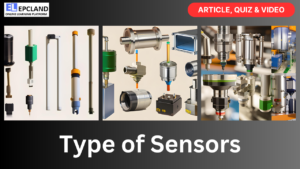Automation Revolutionizing Oil & Gas Industry Projects
Introduction
The Oil & Gas industry has undergone a transformative evolution in recent years, and at the forefront of this transformation is the increasing integration of automation. Automation technologies are revolutionizing how Oil & Gas projects are conceived, planned, and executed. In this article, we will delve into the world of automation in the Oil & Gas sector, exploring its various applications, the advantages it brings to industry projects, real-world case studies, emerging trends, and the critical considerations for its successful implementation.
Table of Contents
Do not miss the Complete Course on Piping Engineering
By EPCLand
Understanding Automation in the Oil & Gas Industry
What is Automation?
Automation in the Oil & Gas industry refers to the use of advanced technologies and systems to perform tasks with minimal human intervention. It encompasses a wide range of technologies, including robotics, artificial intelligence, data analytics, and the Internet of Things (IoT). Automation can be applied to various aspects of the industry, from exploration and drilling to production, transportation, and maintenance.
Applications in Oil & Gas Industry
Automation technologies have found diverse applications across the Oil & Gas sector, reshaping the way projects are planned and executed. Let’s explore some of the key areas where automation plays a pivotal role:
1. Exploration and Reservoir Management
Automation is enhancing the efficiency and accuracy of exploration activities. Advanced algorithms and AI-driven data analysis help geologists and engineers identify promising drilling locations with greater precision. Additionally, automated reservoir management systems continuously monitor well performance, optimizing production and recovery rates.
2. Drilling and Well Operations
Robotic drilling rigs and automated well control systems are reducing the need for human operators on drilling platforms. These systems can make real-time adjustments to drilling parameters, improving safety and increasing drilling efficiency. Automation also facilitates remote monitoring and control of drilling operations.
3. Production and Processing
Automated production systems, coupled with sensors and data analytics, ensure that oil and gas production facilities operate at peak efficiency. Predictive maintenance algorithms help prevent equipment failures, reducing downtime. Moreover, automation enhances safety by minimizing exposure of workers to hazardous environments.
Do not miss the Complete Course on Piping Engineering
By EPCLand
4. Pipeline Monitoring and Control
Automation is vital for the safe and efficient operation of pipelines. Automated control systems can detect leaks, pressure fluctuations, and other anomalies in real time, enabling rapid response and preventing environmental disasters. Additionally, automated pigging systems ensure the integrity of pipelines.
Advantages and Disadvantages of Automation
Here’s a table that summarizes the advantages and disadvantages of automation in the Oil & Gas industry:
| Advantages | Disadvantages |
|---|---|
| Enhanced Safety: Automation reduces the need for human presence in high-risk areas, improving worker safety. | Initial Costs: Implementing automation can require significant upfront investments in technology and infrastructure. |
| Improved Efficiency and Cost Reduction: Automation optimizes operations, leading to increased efficiency and reduced operational costs. | Workforce Transition: Automation may reduce the need for certain manual tasks, necessitating workforce retraining and upskilling. |
| Data-Driven Decision-Making: Automation generates vast amounts of data, enabling better decision-making and predictive maintenance. | Data Security: Protecting sensitive information from cyber threats is essential to maintain the integrity of operations. |
| Environmental Benefits: Efficient operations resulting from automation technologies have a positive impact on the environment. | Regulatory Compliance: Ensuring that automation systems comply with industry-specific regulations and standards can be challenging. |
Case Studies
To illustrate the practical significance of automation in the Oil & Gas industry, let’s examine a few real-world case studies:
Case Study 1: Automated Drilling Rigs
A major oil company implemented automated drilling rigs in its offshore operations. These rigs, equipped with advanced sensors and AI-driven algorithms, significantly improved drilling efficiency, reduced downtime, and enhanced safety. The company reported a 30% increase in drilling speed and a 20% reduction in operational costs within the first year of implementing automation.
Case Study 2: Pipeline Automation
A pipeline operator installed automated control systems along its extensive network of pipelines. These systems detected and isolated pipeline leaks within minutes, preventing environmental damage and costly cleanup efforts. Additionally, automated pigging reduced maintenance downtime by 40%, leading to substantial cost savings.
Case Study 3: Reservoir Management
An independent exploration and production company used automated reservoir management software to optimize its well production. The system continuously analyzed reservoir data and made real-time adjustments to production rates. As a result, the company achieved a 15% increase in oil recovery rates and a 10% reduction in operating costs over two years.
Emerging Trends in Automation
As technology continues to advance, several exciting trends are emerging in the realm of automation within the Oil & Gas industry:
1. Digital Twins
The development of digital twins—virtual replicas of physical assets or processes—allows for real-time monitoring and simulation of oil and gas operations. Digital twins enable predictive maintenance and facilitate scenario analysis to optimize production and reduce downtime.
2. Autonomous Vehicles
Autonomous vehicles, such as unmanned aerial vehicles (UAVs) and autonomous underwater vehicles (AUVs), are being used for inspections, maintenance, and data collection in remote or hazardous areas. These vehicles can access areas that are difficult or dangerous for humans to reach.
3. Edge Computing
Edge computing, where data is processed locally on devices rather than in a centralized data center, is gaining prominence. This approach reduces latency and enables real-time analytics, making it particularly valuable for monitoring and controlling remote Oil & Gas assets.
Critical Considerations for Implementation
While the benefits of automation in the Oil & Gas industry are evident, successful implementation requires careful planning and consideration of key factors:
Safety Protocols
Robust safety protocols must be established to ensure the safe operation of automated systems. This includes fail-safes, emergency shutdown procedures, and worker training to handle automation-related emergencies.
Data Security
With the increased reliance on data-driven decision-making, data security becomes critical. Protecting sensitive information from cyber threats is essential to maintain the integrity of operations.
Regulatory Compliance
Oil & Gas operations are subject to a complex web of regulations. Companies must ensure that their automation systems comply with industry-specific regulations and standards.
Workforce Transition
Automation may reduce the need for certain manual tasks, necessitating workforce retraining and upskilling. Companies must plan for a smooth transition for their employees.
Do not miss the Complete Course on Piping Engineering
By EPCLand
Conclusion
Automation is ushering in a new era for the Oil & Gas industry, enhancing safety, efficiency, and sustainability across all phases of projects. From exploration and drilling to production, transportation, and maintenance, automation technologies are reshaping how the industry operates. As emerging trends such as digital twins, autonomous vehicles, and edge computing continue to evolve, the possibilities for further optimization and innovation are boundless.
In a rapidly changing world where environmental responsibility and operational excellence are non-negotiable, the integration of automation is not just a technological choice but a strategic imperative for the Oil & Gas industry. By embracing automation, companies can navigate the complexities of the sector while ensuring a more sustainable and prosperous future for all stakeholders.
FAQs
1. What is the primary goal of automation in the Oil & Gas industry?
- The primary goal of automation in the Oil & Gas industry is to enhance safety, efficiency, and sustainability in various aspects of projects, from exploration and drilling to production, transportation, and maintenance.
2. How does automation improve safety in Oil & Gas operations?
- Automation reduces the need for human presence in high-risk areas, minimizing the potential for accidents. It also enables real-time monitoring and immediate response to safety-critical events.
3. What are some emerging trends in automation for the Oil & Gas sector?
- Emerging trends include the development of digital twins for real-time monitoring, the use of autonomous vehicles for inspections and maintenance, and the adoption of edge computing for real-time analytics in remote areas.
4. What are the key considerations for successful automation implementation in the industry?
- Successful automation implementation requires robust safety protocols, data security measures, compliance with industry regulations, and planning for workforce transition and upskilling.
5. How does automation contribute to cost reduction in Oil & Gas projects?
- Automation optimizes operations, leading to increased efficiency and reduced operational costs. It minimizes downtime, prevents equipment failures, and streamlines processes, resulting in significant cost savings for companies.
Recommended courses (Published on EPCLand)
- Basics of Piping Engineering
- Piping Layout Engineering
- Piping Material Engineering
- Piping Stress Analysis
- Complete Course on Piping Engineering
- Material Requisitions
- Piping Material Specifications
- Valve Material Specifications
Don’t miss the published articles on following:
| Article Name with Link | Article Name with Link |
| Future Trends | Basics of Control Valve |
| Principles of Instruments | Control Valves |
| Advanced Control Strategies | HMI Design |
| Automation | PID Controller |
| Calibration | PLC |
| Remote Monitoring and SCADA |
Do not miss the Complete Course on Piping Engineering
By EPCLand
Related Video
Attempt Quiz
Question 1:
What is SCADA in the context of oil & gas automation?
Explanation: SCADA stands for Supervisory Control and Data Acquisition, which is a system used for monitoring and controlling various processes in oil & gas projects.
Question 2:
What is the purpose of DCS in industrial automation for oil & gas?
Explanation: DCS stands for Distributed Control System, which is used for centralized control and monitoring of various processes in oil & gas facilities.
Question 3:
What is the purpose of PLCs in oil & gas automation?
Explanation: PLCs, or Programmable Logic Controllers, are used for automating and controlling machinery and processes in oil & gas operations.
Question 4:
What is the significance of HMI in oil & gas automation systems?
Explanation: HMI stands for Human-Machine Interface, which provides a graphical interface for operators to interact with and control automation systems in the oil & gas industry.
Question 5:
What is the purpose of safety instrumented systems (SIS) in oil & gas automation?
Explanation: Safety instrumented systems (SIS) are used in oil & gas automation to provide safety and emergency shutdown functions, helping to prevent accidents and protect personnel and equipment.



